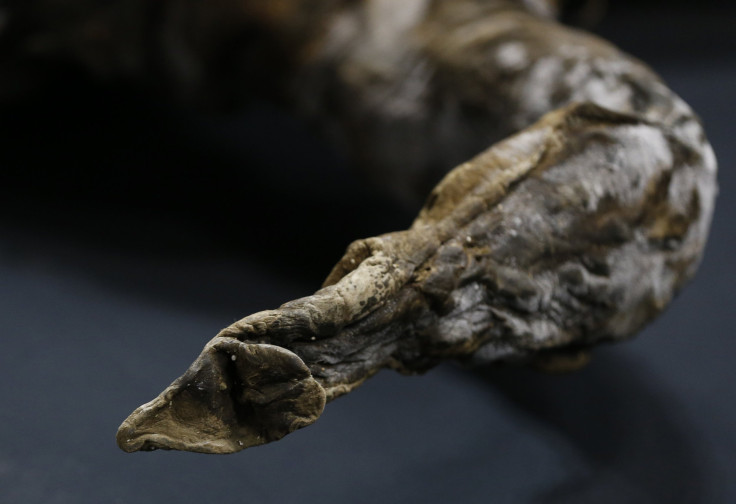
It's about as close as you can get to a living woolly mammoth without the aid of a time machine. The remains of a well-preserved woolly mammoth -- featuring tuffs of orange-brown fur, soft tissue and signs of human butchering -- found in Serbia three years ago, 39,000 years after the creature's death, was unveiled in Japan, the Christian Science Monitor reported. The two-year-old mammoth dubbed Yuka still has her teeth, bones and tusks, making her a highly unusual find for scientists.
"It's exceptionally rare to find intact mammoths," Kevin Campbell, an associate professor of environmental and evolutionary physiology at the University of Manitoba, said. "And to find a mammoth that has been conclusively found to have been butchered by humans makes this find exceedingly unusual."
The mammoth was found under layers of soil and appeared to have been gnawed on by predators, nearly preventing the preservation of her legs and torso. Campbell told reporters, however, that climate change is making preserved bodies of prehistoric creatures a more common phenomenon as the warming climate melts the ice and reveals the bodies. This is the first time scientists are believed to have discovered mammoth blood as well, the Nation reported. The blood was found sealed within the ice below the mammoth. Mammoths with preserved soft tissues like this one of particular interest to scientists as it could help them piece together the mystery of how, exactly, mammoths managed to survive the extreme cold in the Ice Age.
The mammoth will be on display in an exibition room in Yokohama, Japan from July 13 to Sept. 16.
© 2025 Latin Times. All rights reserved. Do not reproduce without permission.




